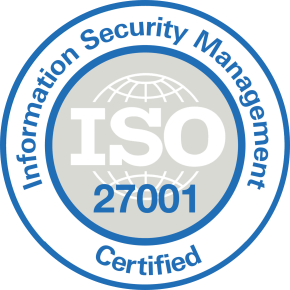What Are SOC Services?
Security Operations Center (SOC) services provide a specialized, outsourced team and infrastructure focused on monitoring, assessing, and defending an organization’s information systems against cybersecurity threats. These include networks, devices, applications and workloads, and the data centers that house them.
SOC services provide a combination of security solutions, sophisticated monitoring tools, and cybersecurity processes to detect, analyze, and respond to incidents and breaches on behalf of an organization, and also act to proactively improve the organization’s security posture. Their goal is to maintain the integrity, confidentiality, and availability of information assets, ensuring business continuity and protecting against potential cyberattacks.
A SOC service is useful for smaller organizations that do not have an in-house SOC facility, or for organizations facing significant cyber threats who need access to the expertise and advanced technology of a cybersecurity provider. They can also be useful for larger enterprises that would like to reduce the workload from their in-house SOC team and improve efficiency.
In this article
Key Functions of SOC Services
The primary function of a SOC is to ensure the security of an organization’s IT infrastructure. This is achieved through four main activities: prevention and detection, investigation, and response.
1. Prevention and Detection
SOC services employ advanced technologies and methodologies to prevent cyber threats and detect vulnerabilities within an organization’s network. Through comprehensive risk assessments and continuous monitoring, these services identify potential security gaps and implement protective measures to mitigate risks.
This includes deploying advanced threat intelligence platforms that gather and analyze data from various sources to predict and prevent attacks before they occur. Additionally, SOC services utilize security information and event management (SIEM) systems to aggregate and analyze log data in real-time, enabling the detection of suspicious activities and potential threats as they happen. Many SOC services use machine learning and artificial intelligence to enhance their detection capabilities, ensuring they can detect sophisticated attacks and unknown threats.
2. Investigation
When SOC services detect a potential security incident, they initiate a detailed investigation to ascertain the scope and impact of the threat. This process involves leveraging digital forensics tools and techniques to trace the origins of the attack, understand the tactics, techniques, and procedures (TTPs) used by attackers, and determine the extent of the compromise.
SOC services gather and analyze evidence from network traffic, access logs, and affected systems to piece together the attack timeline and identify the vulnerabilities exploited. This in-depth analysis aids in understanding how the breach occurred, how to contain and mitigate it, and also in developing targeted strategies to prevent future incidents.
3. Response
Upon confirming a security incident, SOC services take immediate action to contain the threat and minimize its impact. This includes executing pre-defined incident response protocols such as isolating affected systems, blocking malicious IP addresses, and applying emergency patches to vulnerabilities.
SOC services coordinate closely with an organization’s IT team to ensure swift and effective measures are taken to secure the network and systems. Following containment, SOC services focus on eradication and recovery processes, such as removing malware, restoring systems from backups, and implementing additional security measures to prevent recurrence. They also provide comprehensive reports detailing the incident, response actions taken, and recommendations for future prevention.
4. Remediation
Following the containment of a security incident, SOC services shift their focus to remediation, which involves eliminating the root cause of the breach and restoring affected systems to their normal state. This phase includes several critical activities such as patching vulnerabilities, removing malicious code, and reconfiguring compromised systems to prevent future exploitation. SOC teams also conduct thorough assessments to ensure that no remnants of the attack persist, thereby minimizing the risk of reinfection.
Remediation efforts extend to implementing additional security measures and controls to bolster the organization’s defenses. This may involve updating security policies, enhancing access controls, and deploying advanced threat detection tools. SOC services also provide detailed post-incident analysis and recommendations to improve the overall security posture, ensuring that the organization is better prepared to handle similar incidents in the future.

Tal ZamirCTO, Perception Point
Tal Zamir is a 20-year software industry leader with a track record of solving urgent business challenges by reimagining how technology works.
TIPS FROM THE EXPERTS
- Establish a clear incident escalation process. Define clear protocols for when and how incidents should be escalated within your organization. This ensures that critical threats are addressed promptly and efficiently, reducing response times and potential damage.
- Integrate threat hunting into SOC operations. Encourage proactive threat hunting rather than relying solely on alerts from automated tools. This involves actively searching for signs of compromise, even if no alarms have been triggered, allowing you to uncover threats that may evade traditional detection methods.
- Regularly update playbooks based on incident learnings. After each incident, update your SOC’s playbooks to reflect the lessons learned. This continuous improvement process helps adapt your response strategies to evolving threats and ensures your team is prepared for similar future incidents.
SOC Services vs. Alternative Services
1. SOC Service vs. MDR
While similar to a SOC service, Managed Detection and Response (MDR) focuses on identifying and responding to threats, with a specific focus on endpoint protection, while SOC services provide a comprehensive view of an organization’s security posture.
MDR is a more reactive approach, continuously scanning for threats and responding promptly when one is detected. It uses technology like endpoint detection and response (EDR) and eXtended detection and response (XDR), managed by human security experts, to identify, investigate, and mitigate threats.
SOC Services provide 24/7 monitoring, detection, and response to security incidents, maintaining a comprehensive view of an organization’s security posture. SOC services incorporate various security technologies and processes, managed by a team of security experts, to manage and oversee all security operations.
Learn more in the detailed guide to MDR security
2. SOC Service vs. Managed SIEM
Security Information and Event Management (SIEM) is a crucial technology used in many security operations, including SOC services. Managed SIEM is a service where a third party manages and operates SIEM technology on behalf of an organization. While managed SIEM can be a critical part of a SOC, it is not as comprehensive as SOC services.
Managed SIEM collects and analyzes log and event data to identify potential security incidents. It provides real-time analysis and reporting, enabling organizations to detect and respond to threats quickly. However, it is primarily a technology solution and lacks the human element crucial in advanced threat detection and response.
SOC services integrate SIEM technology as part of a broader suite of security services. They add a layer of human expertise, with security analysts monitoring the outputs from the SIEM, investigating alerts, and responding to incidents.
3. SOC Service vs. Managed Email Security
Managed Email Security services specifically focus on protecting an organization’s email communications from threats such as phishing attacks, malware, spam, and business email compromise (BEC). These services employ a variety of technologies and strategies to filter out malicious emails, authenticate email communications, and protect sensitive data from being exposed or compromised.
SOC services cover not just email but all aspects of the digital environment, including network traffic, user behavior, and application performance. SOC services integrate email security as part of their security monitoring, detection, and response capabilities. SOC teams analyze data from email security solutions along with other security tools to identify complex threats and coordinate a unified response across the organization’s IT environment.
Managed email security services often include features like anti-spam, anti-phishing, data loss prevention (DLP), email encryption, and sandboxing technology to analyze attachments in a secure environment. Advanced email security solutions, such as Perception Point, also provide a dedicated incident response team of security experts who can help respond to email security incidents.
Related content: Read our guide to cybersecurity strategy
Managed Incident Response Service from Perception Point
SOC teams are facing a growing amount of challenges. Between monitoring content traffic, analyzing incidents, managing false positives, interacting with end users, and learning about new attack trends, your SOC team is bound to face burnout. Perception Point’s Managed Incident Response Service is here to solve these problems for you.
Combining machine learning capabilities, autonomous LLM models, and close interaction with our human cyber experts, we make sure every incident is analyzed, creating a safe content-sharing environment.
With Perception Point’s all-inclusive Incident Response service, a team of cybersecurity experts act as extension of the organization’s SOC team. The team handles all ongoing activities; managing incidents, reporting and SOC team updating.
Perception Point’s Incident Response team is responsible for:
- Monitoring, analyzing and reporting on all incidents flagged by the system
- Providing rapid alerts and analysis of malicious attempts
- Handling of false positives and false negatives to change the verdict, contain and remediate
- Maintaining policies and fine-tuning decisions and rules according to attacks seen in the wild
This service allows organizations like yours to alleviate costly SOC resources and reduce SOC team fatigue.
Learn more about Perception Point’s incident response services

Security Operations Center (SOC) services provide a specialized, outsourced team and infrastructure focused on monitoring, assessing, and defending an organization’s information systems against cybersecurity threats. These include networks, devices, applications and workloads, and the data centers that house them.
The primary function of a SOC is to ensure the security of an organization’s IT infrastructure. This is achieved through four main activities: prevention and detection, investigation, response, and remediation.
























